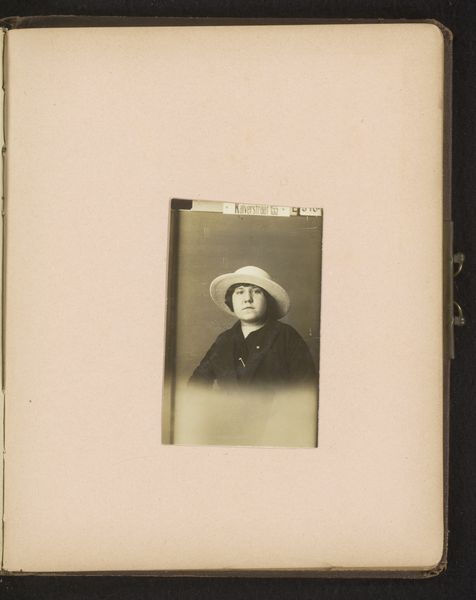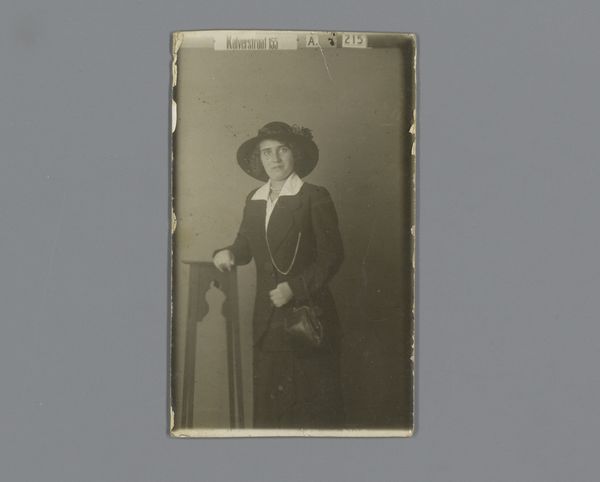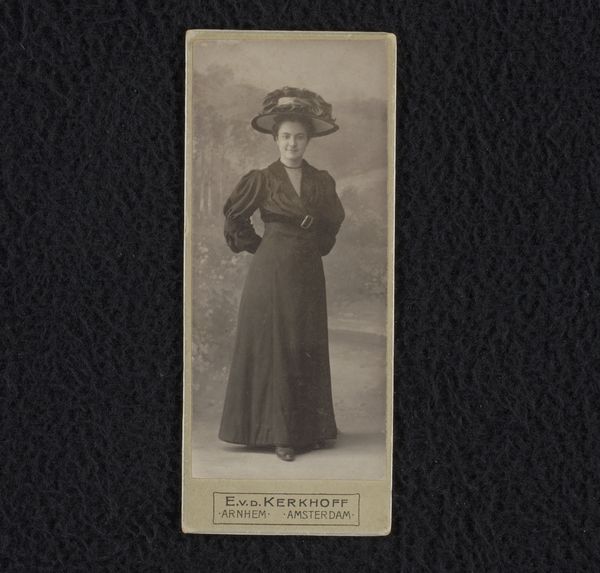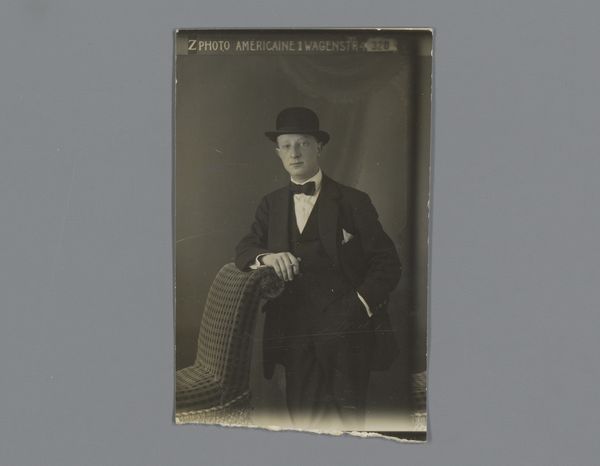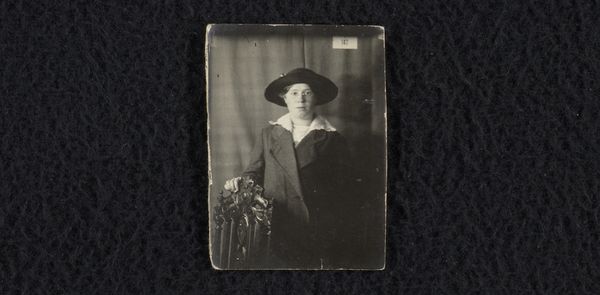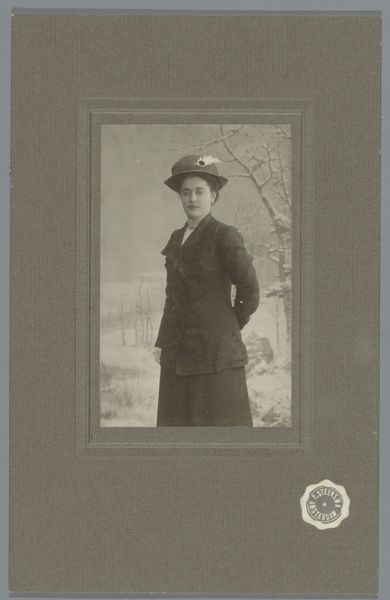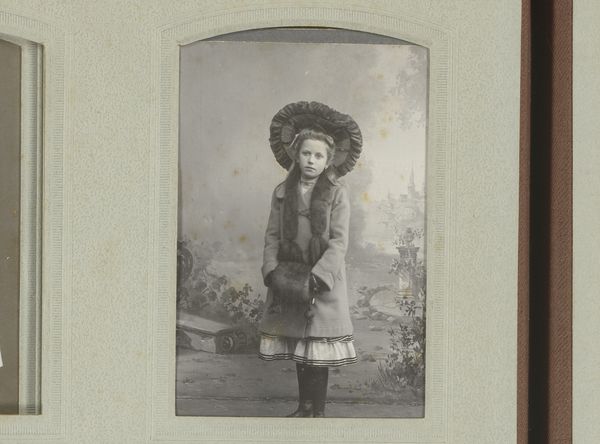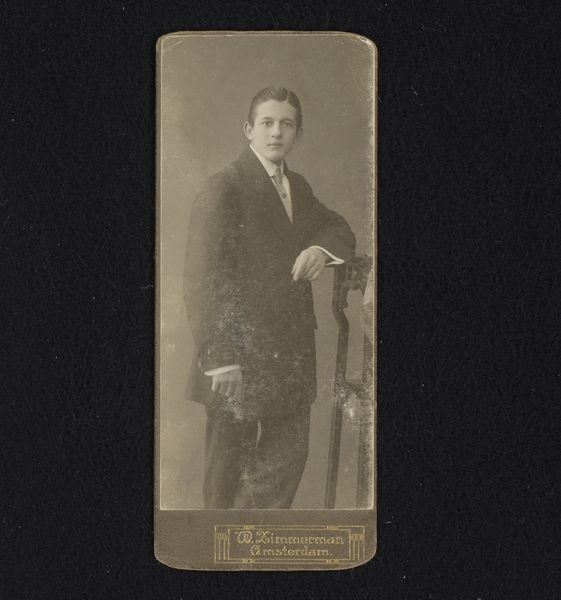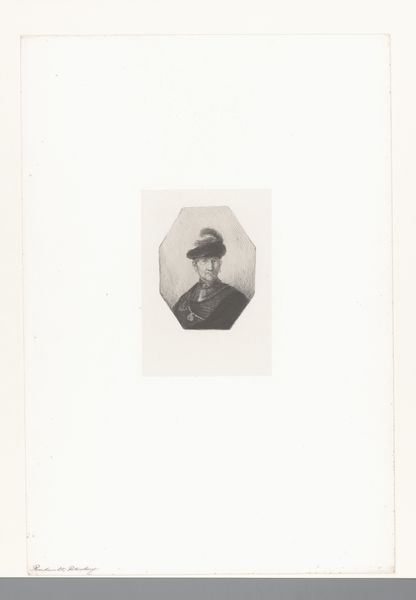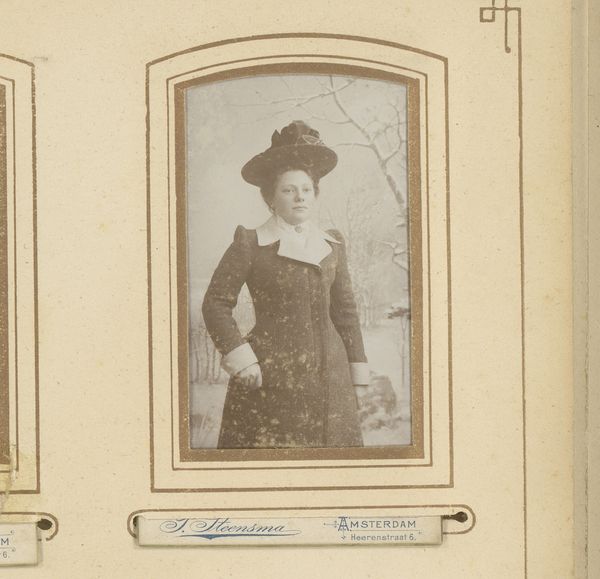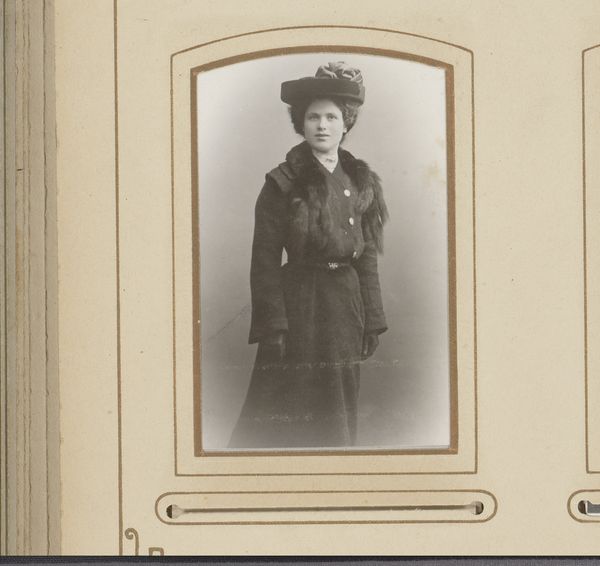
photography, gelatin-silver-print
#
portrait
#
photography
#
gelatin-silver-print
#
realism
Dimensions: height 79 mm, width 53 mm
Copyright: Rijks Museum: Open Domain
Editor: Here we have "Portrait of an Unknown Girl," a gelatin-silver print taken around 1918-1920 by Foto Americaine. I'm immediately struck by the somber tone and the formal pose. How do you interpret this work? Curator: This image presents us with several compelling entry points. Consider the time period - just after the First World War. How do you think the pervasive sense of loss and social upheaval might be reflected in this portrait? Is the girl's somber expression a personal reflection, or does it echo a collective mood? Editor: That’s a great point. I hadn’t really considered the post-war context. The lack of ostentation in her clothing also speaks to a possible cultural shift, maybe a move away from Victorian extravagance. Curator: Precisely. Her attire, while formal, lacks any real markers of wealth. Look, too, at the backdrop and the decorative column. Do these feel genuine, or more like constructed artifice? What does that contrast suggest? Editor: It feels very staged, almost like a theatrical production. It makes me wonder about the role of the photographer, "Foto Americaine," and the kind of image they were trying to project, and for whom. Curator: Exactly! And it begs the question of the subject's agency. Did she have a say in how she was presented, or was she merely a participant in a larger, commercially driven narrative about femininity and respectability? Editor: That's such a valuable perspective. Thinking about the photograph as a product of its time, shaped by social and economic forces, completely changes how I see it. I now notice details I missed initially. Curator: And by viewing those elements within that historical context, we begin to understand not only the image itself but also the power dynamics at play during that era. Therein lies the heart of photographic truth.
Comments
No comments
Be the first to comment and join the conversation on the ultimate creative platform.
